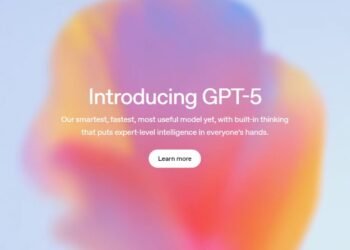In today’s IT world, efficiently provisioning, configuring, and managing infrastructure is essential. The need for faster development alongside stable and secure systems has led to the rise of Infrastructure as Code (IaC) and Configuration as Code (CaC). Two of the top tools supporting these practices are HashiCorp Terraform and Red Hat Ansible. Though each excels in different areas, using them together creates a powerful solution for fully automating the entire infrastructure lifecycle.
In this article, we’ll explore Terraform and Ansible, their features, similarities, and differences to help you make confident DevOps choices.
Also Read: SRE vs DevOps: Which One Fits Your Team Best?
What is Terraform and Ansible?
Orchestration and configuration management are key components of managing infrastructure. Terraform and Ansible are among the most popular DevOps tools used to handle these tasks effectively.
Terraform
Terraform is a free open-source IAC tool that helps you set up and manage both cloud and on-premises resources using simple configuration files. These files are written in a language called HCL (HashiCorp Configuration Language) or, if you prefer, JSON. Terraform’s main job is to create, update and track your infrastructure in a safe and organized way. It can handle everything from basic components like servers, storage, and networks to advanced ones like DNS records or SaaS services, connecting to them through “providers” that work with almost any service offering an API.
Key Features of Terraform
Terraform’s popularity comes from several powerful key features:
Multi-Cloud Capability
Terraform works with many providers from AWS, Azure and Google Cloud to on-premises environments. This lets teams use the same workflow across different platforms, making it easier to manage complex and mixed environments.
Modularity and Reusability
Using modules, Terraform lets you create reusable infrastructure components. This reduces code repetition, follows best practices, and allows you to build standardized templates. Modules can be downloaded from the Terraform Registry or built from scratch.
Execution Plans
Before applying changes, Terraform creates a plan that shows exactly what will be created, updated or removed. This preview step improves safety by allowing review and approval before changes happen.
Resource Graph
Terraform maps relationships between resources and runs non-dependent tasks at the same time, speeding up provisioning and managing dependencies efficiently.
Collaboration
With tools like HCP Terraform and Terraform Enterprise, teams get features such as shared state, version control integration, role-based access controls, and governance policies for smoother collaboration.
Ansible
Ansible is an open source command-line automation tool written in Python that helps simplify IT tasks. It automates repetitive jobs like installing software, updating systems, enforcing security rules, and configuring servers. Ansible is designed to be easy to use, with human-readable language and a simple framework.
Key Features of Ansible
Here are enlisted the main features of Ansible are:
Simplifies Automation with Playbooks in YAML
Ansible Automation Platform relies on playbooks written in simple and easy-to-read YAML syntax. These playbooks are commonly used to automate administrative tasks like orchestration, configuration, management, and deployment. A playbook contains one or more “plays,” which define how to set up a web service or application. Each play can execute one or more tasks, and each task calls an Ansible module, the building blocks that perform specific automation actions.
YAML is a plain-text and human-friendly format that works well with source control and can integrate with other languages like Ruby, Python or Bash. Since Ansible Automation Platform uses YAML that can help those who are not even familiar with coding experience can confidently automate infrastructure and streamline operations.
Operates Without Agents
One of the standout advantages of Ansible Automation Platform is that it’s completely agentless. This means you don’t have to install any additional software on the systems you want to manage. As a result, Ansible can easily scale which allows you to quickly and efficiently manage many machines or systems at the same time.
Smarter Automation with Generative AI
Red Hat Ansible Lightspeed, the platform’s built-in generative AI service, enables automation teams to work more intelligently and deliver solutions faster. It enhances IT productivity, bridges skill gaps, and removes onboarding hurdles, allowing automation professionals at all experience levels to tackle complex IT demands with greater efficiency.
Powering Automation Across Hybrid and Multicloud Environments
With hybrid and multicloud computing becoming the norm, IT teams need an automation solution that connects traditional systems with modern cloud services and even extends to the far edge of the network.
Ansible Automation Platform delivers this capability through automation execution environments that create self-contained packages which include all the dependencies required to build, run and manage automation anywhere. These environments make automation projects highly portable and scalable across hybrid and multicloud infrastructure as well as edge locations.
Whether you’re migrating workloads to the cloud, adopting DevSecOps practices or managing an expanding network of edge devices, Ansible Automation Platform adapts to diverse needs. It’s also available directly through leading hyperscaler marketplaces, making it easier than ever to automate across your cloud environments and seamlessly integrate with the services you already use.
Delivers Self-Healing Infrastructure
Event-Driven Ansible, a key capability within Ansible Automation Platform, enables automated responses to routine tasks, IT service management (ITSM) actions, and changing system conditions.
With event-driven automation, predefined actions are triggered automatically when specific events occur. For instance, if a system outage happens, it can instantly send an alert and create a trouble ticket without human intervention. Similarly, it can address a wide range of Day 2 operational needs in the same proactive manner.
This approach reduces repetitive manual work, minimizes human error, and allows IT teams to focus on higher-value tasks. By increasing resilience, responsiveness, and efficiency, Event-Driven Ansible helps organizations build truly self-healing infrastructure.
Security, Compliance, and Consistency
Ansible Automation Platform includes tools that help keep your systems secure, organized, and running smoothly. Role-based access control (RBAC) lets administrators decide who can do what while encryption, audit logs, and inventory tracking make it easier to protect data, meet rules and follow service agreements.
It also uses a Policy as Code (PaC) approach which means rules and limits are built into the automation before it runs. This helps prevent mistakes, keeps processes consistent and builds trust in your automation.
What is the Difference between Terraform and Ansible?
Terraform and Ansible are both important in modern IT automation but they serve different core purposes and follow distinct philosophies. Knowing their differences and common ground is essential to using them effectively whether on their own or together.
Orchestration vs. Configuration Management
The biggest difference between Terraform and Ansible lies in their main purpose:
- Terraform is primarily an orchestration tool focused on provisioning and managing the lifecycle of infrastructure. It creates, updates and destroys resources like virtual machines, networks, storage and DNS records across cloud platforms and on-premises systems. Terraform is about defining “what” you want your infrastructure to look like, its desired state and the relationships between components.
- Ansible is mainly a configuration management tool built for setting up and maintaining software and systems on already provisioned infrastructure. It handles tasks like installing packages, configuring services, deploying applications and enforcing specific system settings. Ansible focuses on “how” to get a system into the desired state.
Declarative vs. Procedural
The way these tools define and run automation is very different:
- Terraform uses a declarative model. You describe the final state you want in HCL (HashiCorp Configuration Language), and Terraform figures out the steps to get there. Resource order in the files doesn’t matter because Terraform builds a dependency graph to execute everything in the right sequence.
- Ansible uses a procedural (imperative) model. Playbooks, written in YAML, contain tasks executed in the exact order listed. You control each step of the process, defining how to reach the desired configuration.
Stateful vs. Stateless
- Terraform is stateful. It keeps a state file mapping your configuration to the real infrastructure. This lets it track dependencies, plan changes, detect drift (when actual infrastructure doesn’t match the desired state), and manage lifecycles. Without this file, Terraform wouldn’t know what it’s managing.
- Ansible is stateless by default. It doesn’t store a persistent record of previous runs. Each time you run a playbook, it checks the current system and applies tasks as needed. While Ansible modules aim to be idempotent (only making changes when required), it doesn’t track resources the same way Terraform does.
Immutable vs. Mutable
- Terraform is well-suited for immutable infrastructure where components are replaced instead of modified. For example, instead of patching a server, you deploy a new one and retire the old. Terraform’s ability to efficiently create and destroy resources supports this approach.
- Ansible is often used for mutable infrastructure where existing systems are updated in place. It’s perfect for applying patches, updates and configuration changes to running environments. While it can work in immutable setups (e.g., building “golden images” with Packer), its design is naturally geared toward modifying what’s already there.
Read Also: Top 9 DevOps Automation Tools to Streamline Your Workflow
What are the Similarities between Terraform and Ansible?
Although Terraform and Ansible work differently, they share several key similarities:
No Agents Required: Both tools generally operate without installing a persistent agent on target systems. Terraform communicates with cloud provider APIs while Ansible connects to managed nodes over SSH or WinRM.
Masterless Operation: Neither requires a dedicated master server or complex management infrastructure for basic use. However, enterprise editions or specific configurations may add centralized components for advanced features.
Remote Management: Both can run commands or apply configurations on remote machines.
Open-Source Platform: Each has a strong open-source foundation, supported by active communities and rich ecosystems of integrations and extensions.
Conclusion
Combining Terraform and Ansible offers a powerful and well-established way to automate the entire IT infrastructure lifecycle. Terraform handles infrastructure provisioning and lifecycle management, while Ansible excels at configuration management and application deployment. Together, they enable organizations to create agile, reliable, and efficient systems by codifying both infrastructure and its configuration. This leads to greater consistency, scalability, faster deployments, and lower operational effort.
Moving from manual processes to full automation with these tools is a continuous evolution. It demands not only technical skills but also a strong commitment to DevOps practices, well-defined processes especially in CI/CD pipelines and ongoing learning and improvement.
For in-depth insights on DevOps, configuration management, and automation tools, visit Techwrix for the latest updates and expert guides.
FAQs on Ansible vs Terraform
What are the advantages of using terraform with ansible?
Using Terraform with Ansible combines the strengths of both tools for a more complete infrastructure management workflow. Terraform excels at provisioning and managing infrastructure as code, ensuring consistent, version-controlled environments. Ansible complements it by handling configuration management, software deployment, and ongoing updates after provisioning. Together, they streamline DevOps pipelines, improve scalability, reduce manual errors, and enable faster, more reliable infrastructure delivery.
As a full stack developer, should I learn Cloudformation, Terraform, and Ansible?
Yes, learning cloud formation, terraform and ansible can greatly boost your capabilities, especially in DevOps and cloud infrastructure management that make you more valuable and confident in your career.
What is the best way to learn HashiCorp’s TerraForm and Ansible, and how long would it take someone with no experience in these technologies to get started?
The best way to learn Terraform and Ansible is through hands-on practice using official documentation, tutorials, and free labs from HashiCorp and Red Hat. Start with basic projects like provisioning a simple server to build confidence. Online courses and YouTube guides can accelerate learning. For a beginner, it typically takes 4–6 weeks to get comfortable with the basics if practiced regularly.
Can Ansible replace terraform?
No, because both have different functions and strengths. While both are automation tools used in IT infrastructure but they worked in different aspects of the infrastructure lifecycle
Which is better for infrastructure creation, Terraform or Ansible?
Terraform is best for infrastructure because the core function of terraform is infrastructure and provisioning.


















